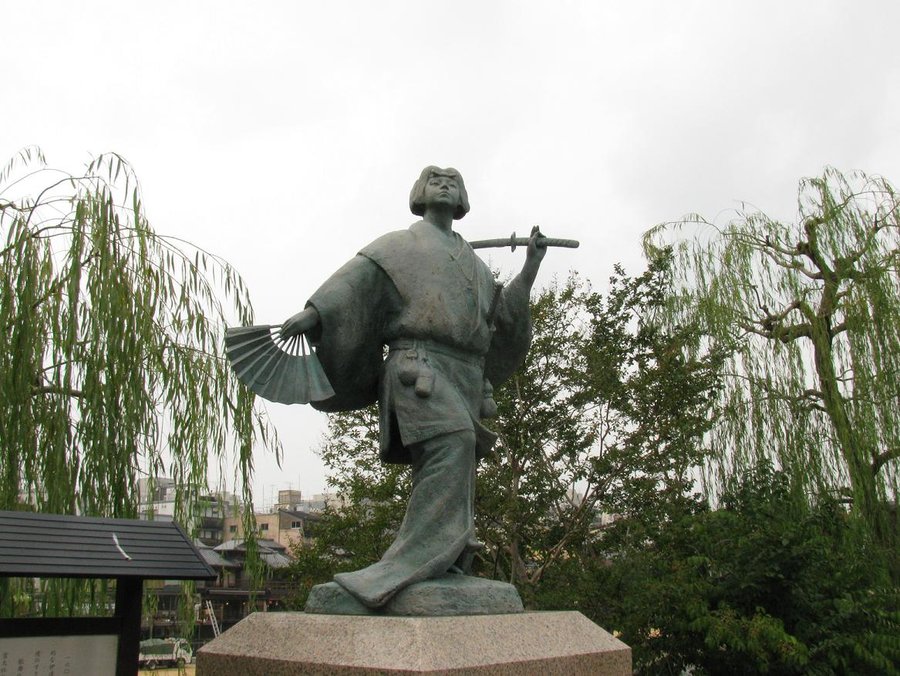
19 Jul Izumo no Okuni
Izumo no Okuni did not find her fame in the elite pleasure houses of Kyoto, where women with elaborate artistic educations provided their clients with the most rarefied pleasures of fantasy-femininity and the most pragmatic pleasures of the flesh. Okuni was a miko, or shrine maiden, at the Grand Shrine at Izumo, a location that gave her a name. Shrine maidens developed skills in shamanic dancing and, often, equal facility as sex workers.
In the dancing part, Okuni excelled. Evidently, like her sisters higher in Kyoto’s sex-work hierarchy, she got some form of artistic education. Or perhaps she was just observant, ambitious, and stunningly creative. Around 1603, she launched a career as a public performer—really, what present-day people might call a busker. She picked a space and started dancing for money and attention. As she earned both, her performances became more elaborate, with more dancers and more musicians and drummers to accompany them. Encouraged, she began to give her dances stories, often daring ones. Some of her dances evolved from traditional folk and religious dance sequences, but she ventured into satire—sometimes impersonating the Shinto priests she had served in the temple, sometimes decking herself out in the regalia of a Christian priest. Her cross-dressing and portrayals of male characters were part of the transgressive thrill she delivered. In one of her pieces, it’s still remembered, she disguised herself as a man paying court to a courtesan.
Her operation morphed into a full-fledged dance troupe, wildly acclaimed. The new fusion form she’d created needed a name, and the one it got was kabuki—one of those Japanese words most people know, even if the other two are sushi and geisha. It comes from kabuku, a verb that means to frolic or to get wild and outrageous. Since she performed in Kyoto during its jaded decadence and scandalized her public regularly, her dances must have had a wicked erotic verve. The red-lantern district of Kyoto was not the easiest place to be transgressive.
Vibrant pictures of Okuni, cross-dressed for a performance, pay tribute to her daring. Her statue in Kyoto probably doesn’t look much like her—it was, after all, erected in 2003. Better late than never, though, when it comes to commemorating a woman who vaulted over the barriers of her time, class, and gender in a society that encouraged women to stay in their places.



